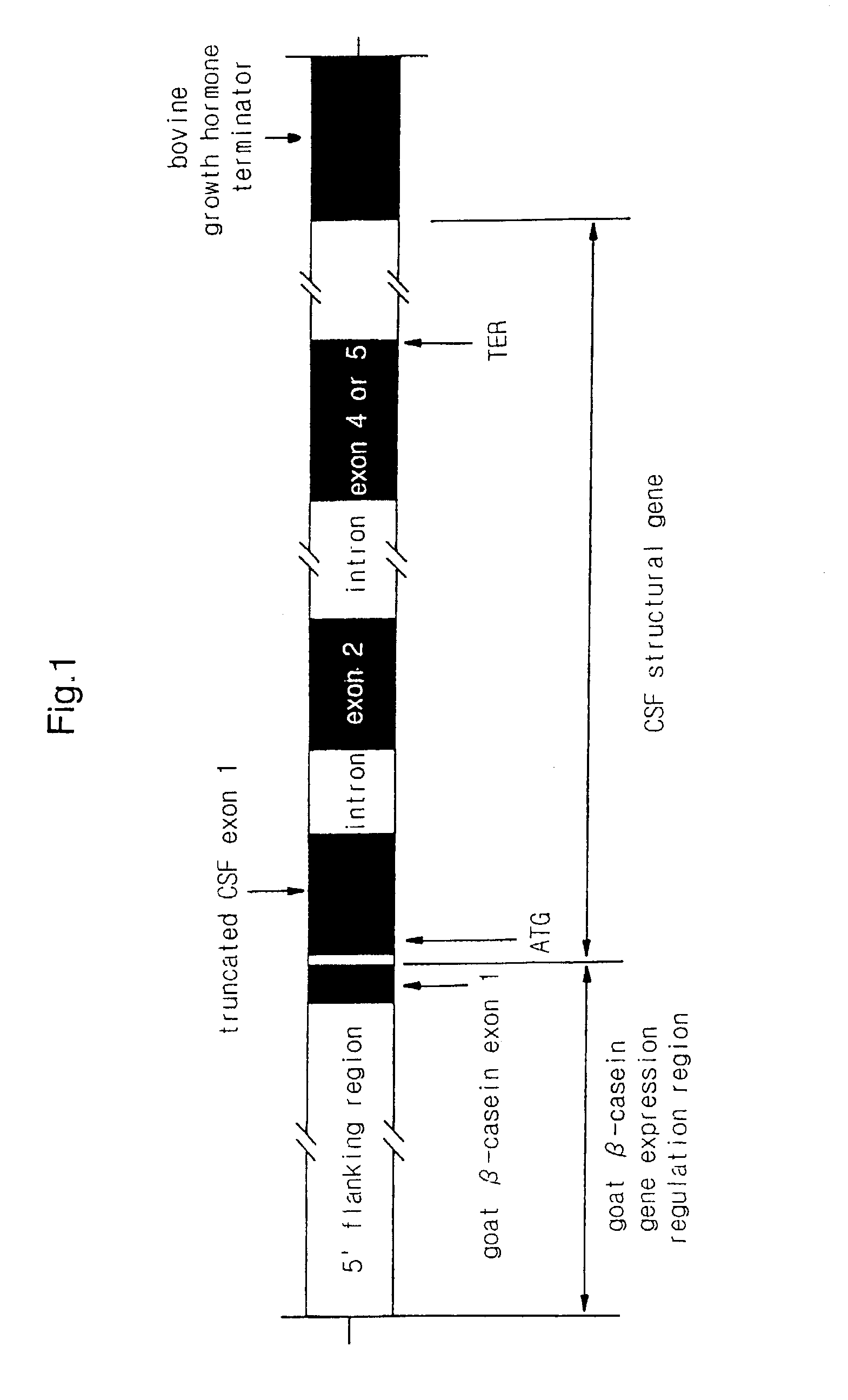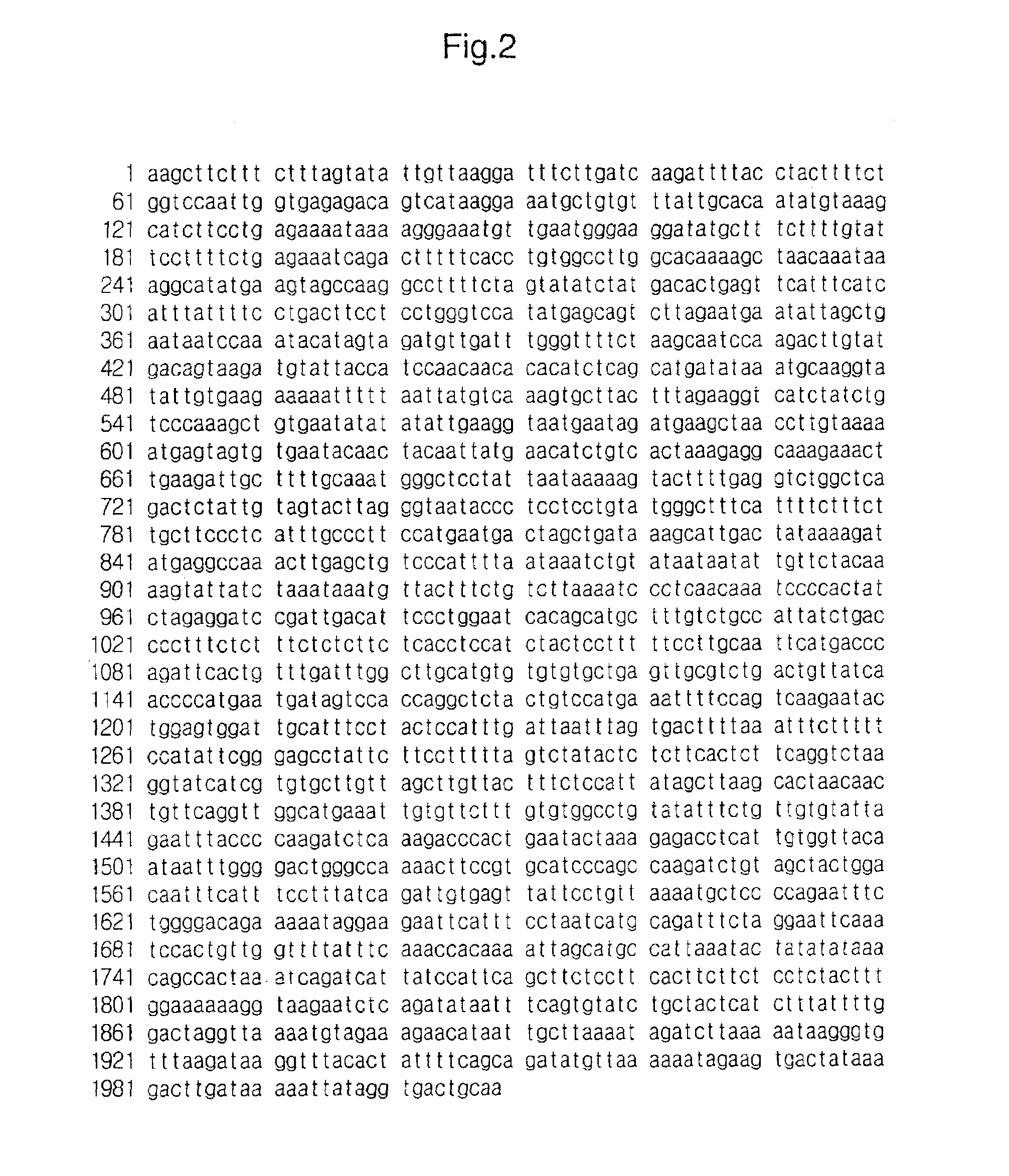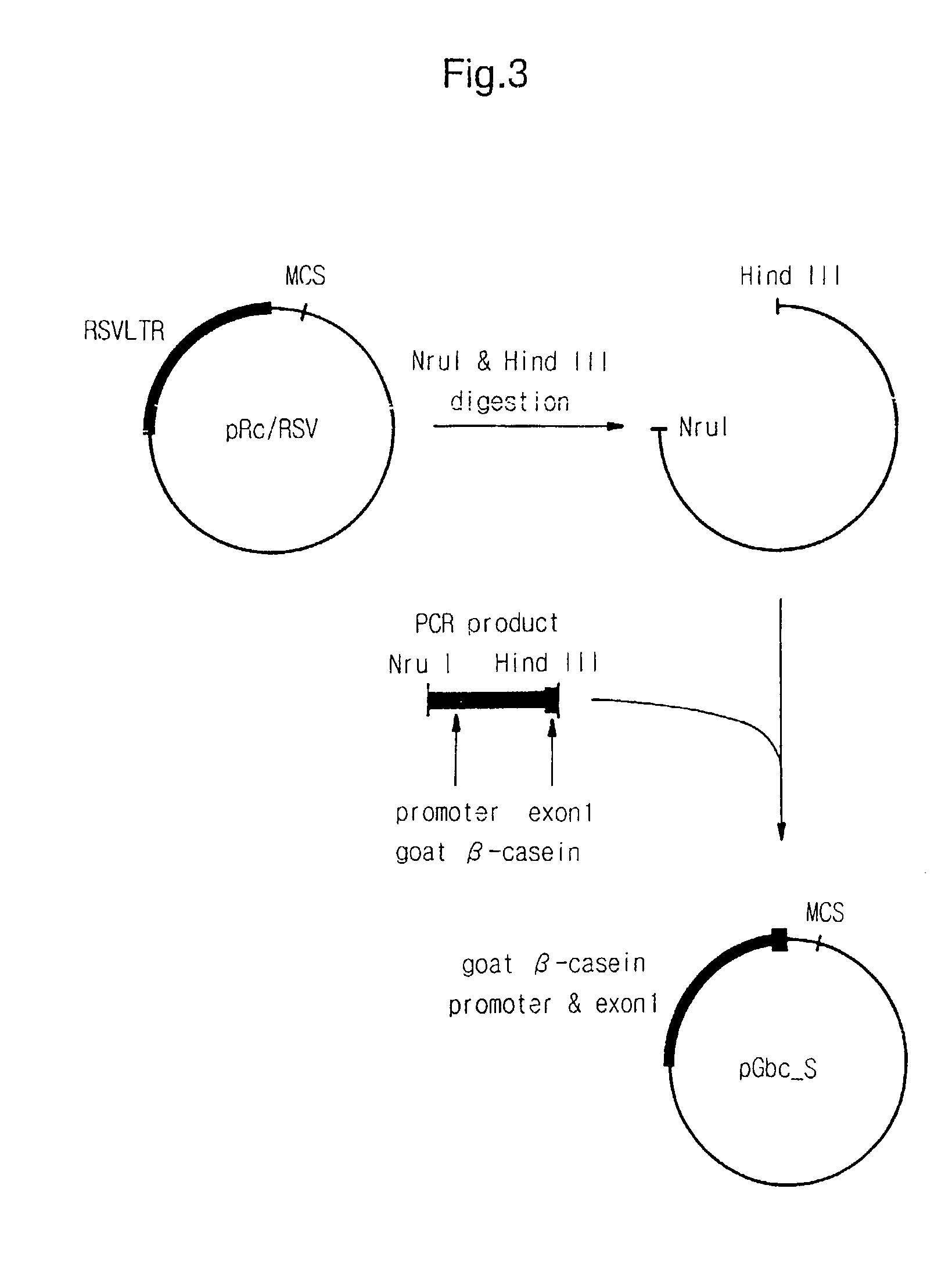Mammary gland tissue-specific expression system using β-casein promoter site of Korean native goat
a tissue-specific and mammary gland technology, applied in the field of mammary gland tissue-specific expression systems, can solve the problems of limited industrial application, production cost, activity sustenance, etc., and achieve the effects of low cost, no pollution, and easy isolation and purification
- Summary
- Abstract
- Description
- Claims
- Application Information
AI Technical Summary
Benefits of technology
Problems solved by technology
Method used
Image
Examples
example i
Construction of the Expression Vectors for HC11 Cell Using Goat β-casein Promoter site and Bovine Growth Hormone Terminator.
[0090]1) Construction of pGbc_S Vector
[0091]From a vector pBluescript II SK (Stratagene) in Which a DNA fragment including the promoter site, exon 1, intron 1 and exon 2 of a goat β casein gene was subcloned, a stretch of DNA which covered from 501 nucleotides to one nucleotide on the 5′ side of the translation start codon for exon 1, was obtained by a PCR using primers CAS-F1 (SEQ ID NQ:6) and CAS-R1 (SEQ ID NO:7). Which had a base sequence of 5′-TGA TCG, CGA GTC CAC CAG GCT CTA CTG TC-3′ and 5′-GAG AAG CTT AAT GGA TAA TGA TCT GA-3′, respectively. The PCR consisted of 35 thermal cycles in which heating was performed in the order of at 94° C. for 3 min, at 55° C. for 1 min and at 72° C. for 1 min for the first cycle, in the order of at 94° C. for 1 min, at 55° C. for 1 min and at 72° C. 1 min for cycles 2–34, and in the order of at 94° C. for 1 min, at 55° C. f...
example ii
Recombination Between hGCSF Gene and Mammalian Expression Vector for HC11 Cell
[0097]An hGCSF gene was inserted in each of the vectors pGbc_S and pGbc_L according to the recombination strategy illustrated in FIGS. 5 and 7. In the recombination, the β-casein exon 1 was directly linked to the exon 1 of the hG-CSF gene while the translation start codon for the exon 1 of the hG-CSF gene was kept available.
[0098]In more detail, first, the pUC 19 vector in which an hG-CSF gene was subcloned, was digested with BamH I and Xba I and electrophoresed on an agarose gel to separate the resulting two DNA fragments from each other. These two DNA fragments, which consisted of Fragment I and the other fragment, were separately purified using a Geneclean II kit, commercially available from BIO101. Fragment 1 was believed to comprise exon 2 to poly A signal. The other fragment comprising the vector and exon I was cut with a restriction enzyme Pst I and then, the smaller fragments cut were run on an aga...
example iii
Recombination between hGMCSF Gene and Mammalian Expression Vectors pGbc_S and pGbc_L for HC11 Cells
[0101]The recombination was carried out by following the strategy illustrated in FIGS. 6 and 8.
[0102]First, the hGMCSF gene which was subcloned in a pUC19 vector, was extracted by digestion with restriction enzymes BamH I and EcoR I and by purification with a Geneclean II kit (BIO101) from an agarose gel on which the digested DNA fragments were electrophoresed. Then, the hGMCSF gene was inserted by ligation to a pBluescript II SK vector (Stratagene) which had been digested with the same endonucleases and then, with a bovine alkali phosphatase, to afford a recombinant plasmid pBluescript II SK-hGMCSF. A modified gene was recovered from this recombinant plasmid by digestion with Hind III and Xba I, electrophoresis on an agarose gel and purification with a Geneclean II kit (BIO101) and then, ligated to a pGbc_S vector which were previously treated with the same endonuclease and then with ...
PUM
| Property | Measurement | Unit |
|---|---|---|
| concentration | aaaaa | aaaaa |
| concentration | aaaaa | aaaaa |
| concentration | aaaaa | aaaaa |
Abstract
Description
Claims
Application Information
 Login to View More
Login to View More - R&D
- Intellectual Property
- Life Sciences
- Materials
- Tech Scout
- Unparalleled Data Quality
- Higher Quality Content
- 60% Fewer Hallucinations
Browse by: Latest US Patents, China's latest patents, Technical Efficacy Thesaurus, Application Domain, Technology Topic, Popular Technical Reports.
© 2025 PatSnap. All rights reserved.Legal|Privacy policy|Modern Slavery Act Transparency Statement|Sitemap|About US| Contact US: help@patsnap.com



